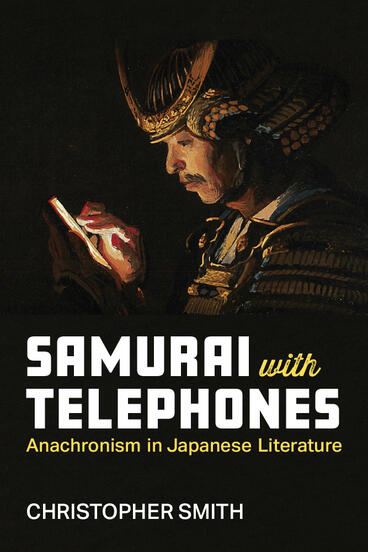Samurai with Telephones
Anachronism in Japanese Literature
What anachronisms reveal about historical narratives through Early Modern and Modern Japanese cultural products
Description
What is going on when a graphic novel has a twelfth-century samurai pick up a telephone to make a call, or a play has an ancient aristocrat teaching in a present-day schoolroom? Rather than regarding such anachronisms as errors, Samurai with Telephones develops a theory of how texts can use different types of anachronisms to challenge or rewrite history, play with history, or open history up to new possibilities. By applying this theoretical framework of anachronism to several Japanese literary and cultural works, author Christopher Smith demonstrates how different texts can use anachronism to open up history for a wide variety of different textual projects.
From the modern period, this volume examines literature by Mori Ōgai and Ōe Kenzaburō, manga by Tezuka Osamu, art by Murakami Takashi, and a variety of other pop cultural works. Turning to the Early Modern period (Edo period, 1600–1868), which produced a literature rich with playful anachronism, he also examines several Kabuki and Bunraku plays, kibyōshi comic books, and gōkan illustrated novels. In analyzing these works, he draws a distinction between anachronisms that attempt to hide their work on history and convincingly rewrite it and those conspicuous anachronisms that highlight and disrupt the construction of historical narratives.
Christopher Smith is Assistant Professor of Modern Japanese Literature and Culture at the University of Florida.
Reviews
"As a long-time fan of Tezuka Osamu's 'Phoenix' series, I was delighted to read Christopher Smith's insightful analysis of anachronism in Japanese texts, from contemporary manga, anime, and fine arts back to Meiji-period literature and Edo-period kabuki, puppet theater, and pulp fiction. Tezuka's samurai with telephones appear alongside numerous other 'historical dislocations,' altering historical discourses in unexpected and intriguing ways."
- Rachael Hutchinson
–Rachael Hutchinson, University of Delaware
"Smith, in conversation with theories of modernity, formulates the concept of 'dialogic anachronism,' applying it brilliantly to an impressive sweep of texts, from early modern to modern Japan, including works of literature, film, anime, and manga. In short, Samurai with Telephones rings true."
- Adam L. Kern
–Adam L. Kern, University of Wisconsin–Madison

